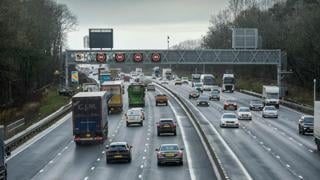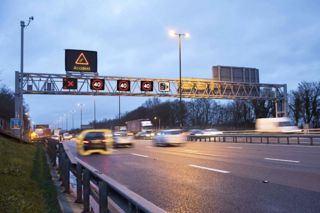The FTA looks at the latest issues to affect vans and trucks, with a Q&A from Eamonn Brennan.
The Provision and Use of Work Equipment Regulations 1998 (PUWER)
PUWER regulations apply to all work equipment, including mobile and lifting equipment in all workplaces.
The regulations affect everyone with a direct or indirect responsibility for such equipment and its use.
Work equipment is everything from tool box tools to a dumper truck, a photocopier, laboratory apparatus, lifting equipment (crane, forklift truck), pressure washer, or a series of machines linked on a production line.
With the exception of private cars, PUWER applies to all vehicles and the equipment mounted upon them.
The following is a simplified summary of the key provisions of the regulation:
- Work equipment should be suitable for the purpose for which it is used or provided and used only for purposes for which it is suitable.
- Work equipment should be in an efficient state, in efficient working order and in good repair.
- There are detailed requirements for inspection and testing of equipment, for example when the quality of installation or where wear and tear could affect its safety. Records should be kept.
- Staff using equipment must receive adequate instruction and supervision.
- Work equipment must comply with relevant product safety laws.
There are specific requirements for guarding of dangerous parts and for protection against specific hazards such as the ejection of material from a machine.
Standards are set for the design and functions of controls.
Requirements are set for roll over protection systems, eg on dumper trucks and forklift trucks and for the carriage of passengers on mobile work equipment.
Smart motorways and 'emergency refuge areas'
All smart motorways have emergency refuge areas (ERA) positioned no more than 1.5 miles apart so that in the event of a vehicle developing a mechanical problem or the driver needing to stop because of an emergency, the area provides a safe zone to stop the vehicle.
These areas are essential, as occasionally smart motorways utilise the hard shoulder as an additional lane when there is a considerable increase in traffic volume or when the lane is required to be opened due to other closures following an incident.
Having the hard shoulder as a ‘live’ running lane presents an obvious danger to all road users. Each refuge area is marked with large blue signs featuring an orange SOS telephone and the road surface within the refuge area is painted orange.
Arrows will direct you to the refuge area where you should stop and switch your hazard lights on. You should then exit the vehicle from the nearside and stand behind the protection barrier.
An emergency telephone is available which will connect you to Highways England who will, in turn, provide further instructions and advice.
These refuge areas should never be used to make or receive a phone call if it is not an emergency, to use the toilet or used as a rest area.
This month, the FTA’s Member Advice Centre has been inundated with questions – here are a few highlights answered by FTA manager of van information Eamonn Brennan

A: It may be best practice, but not all goods vehicles are required to carry fire extinguishers.
Vehicles carrying dangerous goods are required to carry firefighting equipment and the amount and size of fire extinguishers carried will be determined by the quantities of hazardous goods they are carrying and the size of the vehicle (transport unit).
Regulations also require all minibuses and PSV vehicles to carry suitable and efficient apparatus for extinguishing a fire. Any fire extinguishers carried on a vehicle should be regularly inspected and maintained in a serviceable condition at all times.
They should also display an inscription at least showing the next inspection or the maximum permissible period of use as applicable.

A: The requirement for testing of tractors is very specific and came from the EU Roadworthiness Directive 2014/45/EU.
The removal of the exemption relates to fast tractors and the operation they are used for.
The criteria for fast tractors and testing requirements are:
- Able to reach speeds exceeding 25mph
Used for haulage of a load that is not related to:
- Agriculture
- Horticulture
- Forestry operations
- Used more than 15 miles from their operating location
The first test will be required four years from date of registration and then at two-yearly intervals.
To apply for a test, you will need to submit a VTG1 form which can be downloaded from the gov.uk website.

A: It is an offence to park a goods vehicle exceeding 7.5 tonnes gross vehicle weight on a pavement or verge for loading or unloading, unless:
- The loading or unloading could not have been performed if the vehicle had not been parked on the footway or verge and the vehicle was not left unattended while parked.
The purpose is to ensure that some authorised person is available to move or organise the movement of the vehicle if necessary, and to warn pedestrians of the presence of the vehicle; or
- Permission is given by a constable in uniform.
Do you have an issue that needs resolving? Get the solution by emailing us at: commercialfleet@bauermedia.co.uk




















Login to comment
Comments
No comments have been made yet.